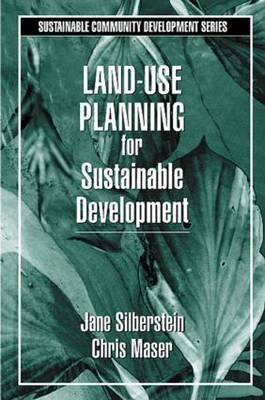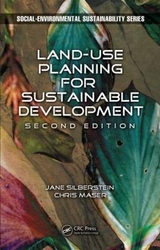
Land-Use Planning for Sustainable Development
Crc Press Inc (Verlag)
978-1-56670-325-3 (ISBN)
- Titel erscheint in neuer Auflage
- Artikel merken
Is the doomsday scenario inevitable? With our increasingly diminishing natural habitat and other natural resources, it seems that we are headed in that direction. After centuries of patchwork land planning, out-of-scale development and cookbook methods, it is clear that we need a better way. Authors Silberstein and Maser explore a different scenario in Land-Use Planning for Sustainable Development.
The authors review the foundations of current land use practices from historical, constitutional, economic, ecological, and societal perspectives. They analyze the results of these practices and suggest alternative methods for guiding, directing, and controlling the ways in which we modify the landscape. They make the case that we-as humans-have the capacity for community with all life and can ultimately embrace the notion that individual well-being is wrapped up in the well-being of the whole, and that social change can occur before major disasters require it.
This is the first book to incorporate land-use planning with sustainability. The authors offer a perspective that opens a range of possibilities for changing current methods. They tackle the difficult dilemma of creating consensus among people-tapping the powers of mind, intuition, and experience in developing a sustainable community. Using sustainability as a framework, Silberstein and Maser present the underlying concepts of sustainable land-use planning. With Land-Use Planning for Sustainable Development, you will discover an array of ideas for modifying conventional planning for and regulation of the development of land.
Foundations of Debate Over Land Use in America
Property Rights and Responsibilities
Our Economic Model
Human Migratory Patterns
Human Nature
Attempts to Modify Conventional Land-Use Planning
Zoning
New Urbanism
Traditional Neighborhood Development
Protecting Diversity through Land-Use Planning
Composition, Structure, and Function of Habitat
The Effect of Modifying Habitat
Cumulative Effects, Thresholds, and Lag Periods
Constraints: The Building Blocks of Sustainable Planning
Modeling the Planning Process after Nature
Fluidity
Nonlinearity
Diversity and Self-Organization
Eliminating the Concept of "Waste"
An Alternative Approach to Comprehensive Land-Use Planning
Land-Use Planning and the Notion of Supply and Demand
Structural Components of the Comprehensive Plan
Developing a Comprehensive Plan
Sample Comprehensive Plan Elements: Transportation
Sample Comprehensive Plan Elements: Land-Use
Sample Comprehensive Plan Elements: Community Facilities and Services
Sample Comprehensive Plan Elements: Cultural Resources
Sample Comprehensive Plan Elements: Economic Development
Paradigm Warning
Implementing the Comprehensive Plan
Zoning Ordinances
Other Regulatory Approaches to Land-Use Control
Non-Regulatory Methods of Controlling Land Use
Monitoring Progress
Change and Our Perception of It
Creating Measures of Progress
Outputs vs. Outcomes
Keeping the Message Alive
The Message
At What Scale is Planning Most Effective?
Is a "Paradigm Shift" Occurring?
Barriers to Overcome
Endnotes
| Erscheint lt. Verlag | 27.6.2000 |
|---|---|
| Reihe/Serie | Social Environmental Sustainability |
| Verlagsort | Bosa Roca |
| Sprache | englisch |
| Maße | 156 x 234 mm |
| Gewicht | 340 g |
| Themenwelt | Naturwissenschaften ► Geowissenschaften ► Geografie / Kartografie |
| Wirtschaft ► Volkswirtschaftslehre | |
| ISBN-10 | 1-56670-325-5 / 1566703255 |
| ISBN-13 | 978-1-56670-325-3 / 9781566703253 |
| Zustand | Neuware |
| Haben Sie eine Frage zum Produkt? |
aus dem Bereich



